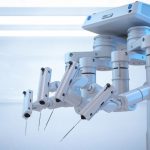With anticipation growing ahead of Tesla’s July 23 second-quarter earnings release, investors are focusing on the company’s response to critical questions spanning product development, technology upgrades, and strategic direction. As the electric vehicle market enters a period of intensified competition, many shareholders are eager to see Tesla address concerns about sustained growth and product line updates. Broader market trends, including fluctuating consumer demand and cost pressures in the sector, provide a challenging backdrop for the company’s latest disclosures. The upcoming Q2 results are seen as pivotal for Tesla’s performance narrative, especially as investors seek clarity on several high-profile initiatives.
Earlier reports on Tesla’s quarterly results have typically emphasized vehicle production and delivery numbers, often highlighting year-over-year growth or fluctuation. Over the past year, commentary has focused on the company’s ongoing transition in its Model Y line, as well as incremental batteries and energy storage deployments like the Megapack. While technology upgrades such as full self-driving have been mentioned in prior calls, investor scrutiny regarding regulatory timelines and retrofit policies continues to intensify. This quarter’s approach marks a more vocal investor demand for specifics and strategic context, especially around artificial intelligence developments and product pipeline updates.
What Progress Is Tesla Making in Technology and Product Development?
A major theme for investor questions centers on Tesla’s developments in advanced technology, particularly its push toward autonomous vehicles and robotics. The company is under pressure to provide detailed updates about the performance and expansion plans for its anticipated robotaxi service. In addition, shareholders want insight into the technical and regulatory barriers that still prevent fully unsupervised Full Self-Driving (FSD) features from being released to customers, and are requesting timelines for broader availability.
How Is the Market Responding to Tesla’s New Models?
The upcoming release of more affordable Tesla vehicles is another focal point, as investors question how new models will navigate the trade-off between cost reduction and profitability. Stakeholders are also seeking clarity on expected demand for these vehicles, especially considering the current global economic outlook. The company’s performance in energy storage—through deployments like its Megapack—and its handling of product transitions, such as the Model Y changeover, are being closely evaluated for their effect on quarterly vehicle sales.
Will Upgrades and Compensation Drive Future Growth?
Shareholders have also spotlighted questions about hardware upgrades, asking for details about retrofit opportunities for current HW3 vehicle owners and progress toward future iterations like HW4 and HW5. Product ramp-up for the Cybertruck, which is in its first year but has not matched the sales of earlier Tesla models, is being scrutinized as well. There is additional interest in the potential scale-up of Optimus, Tesla’s humanoid robot, including its daily use in manufacturing and prospects for external sales. Alongside product updates, investors want to know when a new CEO compensation package will be considered as Tesla advances into its next growth phase.
“What specific factory tasks is Optimus currently performing, and what is the expected timeline for scaling production to enable external sales?”
Tesla’s management is set to address these and other issues during the scheduled live Q&A session, where executives are expected to provide not just performance metrics but also greater transparency about strategic direction. Investors are particularly focused on whether Tesla will soon host another AI Day, revealing updates on its Autopilot, Optimus, and the underlying Dojo chip architecture.
With the electric vehicle sector experiencing heightened competition and fluctuating consumer sentiment, Tesla’s response to these questions will be closely monitored by analysts and shareholders alike. Product innovation, advances in autonomous driving, the pace of hardware upgrades, and the commercial strategy for new model launches are poised to influence evaluations of Tesla’s prospects over the next several quarters. Clarity on regulatory timelines for FSD and tangible developments regarding Optimus could shift market expectations. For investors, careful scrutiny of management’s commentary will provide insights into how Tesla plans to tackle immediate operational challenges while pursuing longer-term ambitions in robotics and artificial intelligence. Understanding the intersections of technology deployment, consumer adoption, and strategic planning will be essential for stakeholders making decisions about the company’s future trajectory.
- Investors seek answers on Tesla’s technology timelines and product pipeline updates.
- Key focus areas include Optimus, affordable vehicles, and self-driving deployment.
- Tesla’s Q2 results and management commentary could shift market sentiment.










